#snake husbandry
Explore tagged Tumblr posts
Text
Help Us Do Real Science!
@talesfromtreatment and I have an ask for our fellow corn snake keepers and breeders.
We're gathering information on corn snake size by age and we need community scientists like you to provide the largest possible body of data.
@talesfromtreatment will be using the information gathered to build an accurate, statistics-supported corn snake growth and feeding guide based on ACTUAL data from ACTUAL corn snake keepers like you! I'm just the numbers gal.
Here's what we need:
Your snake's age (in years)
Your snake's weight (in grams)
A top-down photo of your snake's entire body with an inch or centimeter reference. (see photo below)
All of this information entered in our online form, linked below or copy/pasta: https://forms.gle/QtAwmiFa6fpBewFs8
https://forms.gle/QtAwmiFa6fpBewFs8
We'd love to get data on older snakes, younger snakes, fatter snakes, skinnier snakes. If you've got a corn snake we want their age, weight, and a photo of them with a measuring device.
Photos don't need to be fancy, just give us a top-down view of your snake and a ruler/tape measure/yardstick on a flat surface.
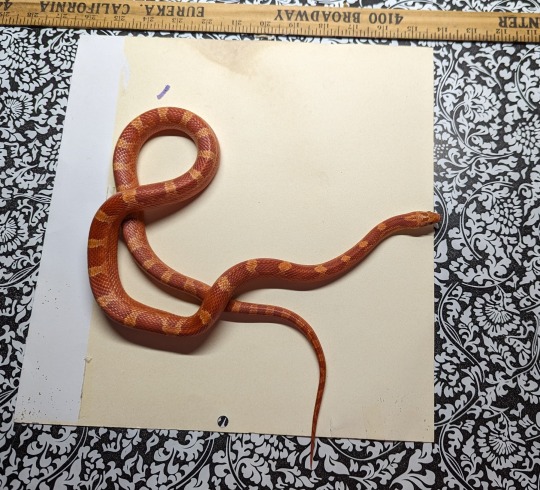
The survey is anonymous and we won't share your photos with anyone nor use them for any purpose beyond collecting morphometric data for this specific study.
Please please please help us collect as much data as possible. Share with your reptile-keeping friends, signal boost, submit your metrics, and stay tuned for updates!
https://forms.gle/QtAwmiFa6fpBewFs8
#snake#snakes#reptile#reptiles#reptiblr#corn snake#corn snakes#corn snake keeping#corn snake husbandry#snake keeping#snake husbandry#snake care#community science#science!!!#science#the link is in here like three times#please help#signal boost#data#herpetology
2K notes
·
View notes
Text

The boyo has discovered his shelf, and I think he approves.
Finished his course of antibiotics, and white blood cell count came back normal, so we're all set to enjoy our new accommodations.
#snake#reptiblr#python#sunny#burmese python#python bivittatus#reptile#snakes#snake husbandry#snake keeping
228 notes
·
View notes
Text
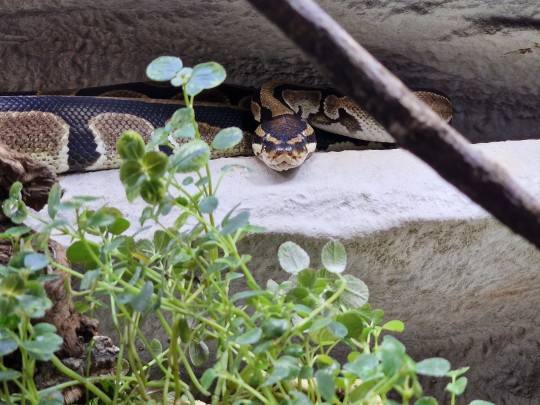
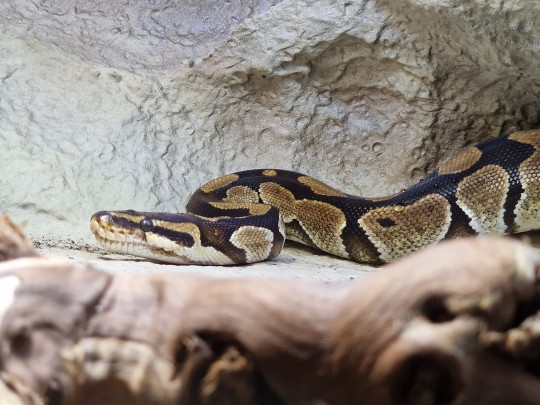
Wonderful seeing her enjoy the new plants I set up ❤
53 notes
·
View notes
Text
I want to see ball pythons. show me your balls.
4 notes
·
View notes
Text
My snake: mother may I have a rödent
Me: before a cold snap in which I am prepared to zip tie you securely inside a bag and then stuff you into my bra if we lose power and then run out of reptile heat packs? Absolutely not
#life in the shark lane#reptiblr#snake husbandry#she ate a big ol meal 7 or 8 days ago#she���ll survive a couple extra days on water rations
12 notes
·
View notes
Text
I happened to check Facebook today and saw a group rehoming reptiles and other exotics in my state. And scrolling through... I'm really glad these animals are being rehomed because a lot of them are in poor condition or have just awful, empty enclosures. A hide and a bowl of water and not much else. Tanks or racks that were way too small.
It made me so so sad. :( Please do your research before getting a pet, especially exotics.
#snakes#animal husbandry#snake husbandry#spaghetti has been all over her tank lately#climbing and burrowing#and it makes me sad these other snakes don't have that
10 notes
·
View notes
Text
Cleaned and redid Wally's enclosure today. He's lost real plant privileges because he keeps 💩 on them, so kinda ugly fake plants are all he is getting for now
I wish I knew what was going through his head when I change up his enclosure. Does he think I've moved him to a completely new location, or does he understand that he's in the same place but the dirt in the ground is new and things have just been moved around. Snakes need thought bubbles
8 notes
·
View notes
Note
Hi, I saw you've got a Malaysian blood python and just wanted to ask how you got her to warm up to you. I have one and he's very insistent on trying to bite me. Thanks!
I'm very lucky, in that since i work at the pet store i got her from, and am the lead animal caretaker, i was the person who handled her the most from the time she was about 2-3 months old to now.
The day she came to the store, her box had been put down on a counter by the delivery person, who had not told anyone it was there, and unfortunately she got pretty cold, to the point i wasn't sure if she'd survive the night by the time i tracked the box down. In order to keep an eye on her, since i had to go to my lunch, instead of putting her in a warm enclosure, i put her in my shirt. Bras are, of course, made to be cozy warm snake pockets.
For the 6 months she was at the store, i would take her out of her habitat and carry her around the store in my shirt, and she loved it. She loved looking around and smelling everything, and she associated the experience with a cozy, warm spot she could huddle up in (thank you, bra)
She has only struck at me once, when i woke her up too quickly and scared her. The only other person she ever struck at was my high strung coworker who can't handle snakes because (I'm fairly certain this is the reason) they can sense her anxiety and fucked up heart rate (she's got heart problems) and snakes go "idk what's wrong with you but stay the fuck away" which i can't fault them for.
Captive bred bloods are typically more handleable than wild caught ones, but they're are still a pretty temperamental breed, and Sweettart is absolutely an exception to the breed. I do think it was my carrying her around like a baby kangaroo for at least an hour 5 days a week for 6 months that got her to be the specimen she is today.
Depending on how old and big your boy is, handling him daily may not be an option for you. Sweettart is only getting to be a year now, so she's still pretty young. She hasn't started turning red yet. Would you mind giving some info on how big he is, and how his habitat is set up? That way I can get an idea on how you can go forward with taming him, simply cause i don't think your gonna have the time to stick him in your shirt and walk around a petco for several hours a day lol
Sweettart says hi btw

#blood python#snakes#animals#ask#snake husbandry#sweettart is such an odd case trust me. i wouldnt squish the head of like any other blood#shes the least head shy creature ever
3 notes
·
View notes
Text
It is a cute comic! Yay for pet snake love! Although I think that is a Green Tree Python, which can be rather delicate and aren't generally recommended as beginner snakes. You're better off with something like a corn snake as a first pet! Just make sure to find a reputable breeder and try to avoid chain stores like Petco/Petsmart. And always do your research first before bringing an exotic pet home. 🐍

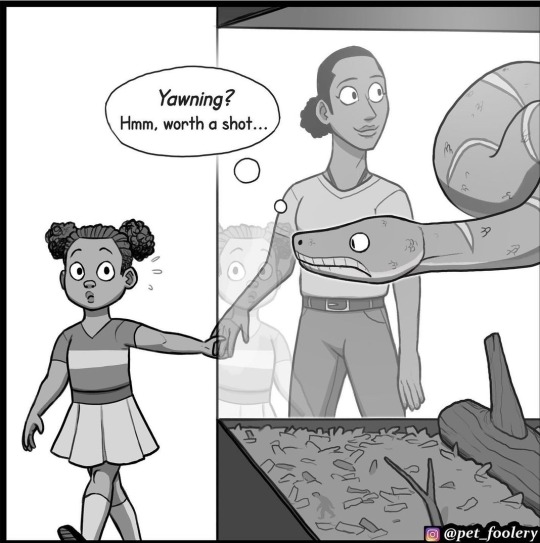

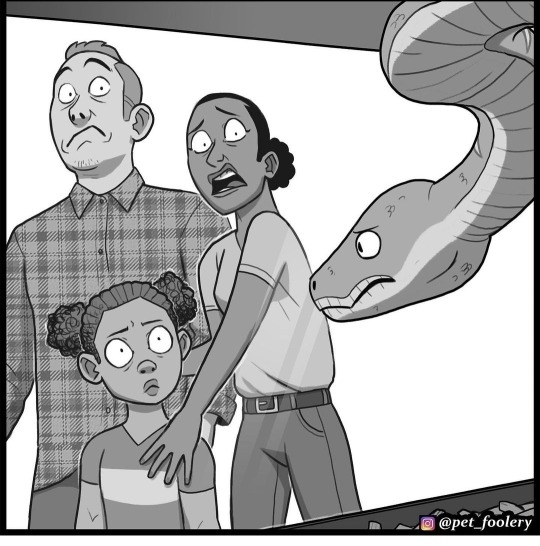
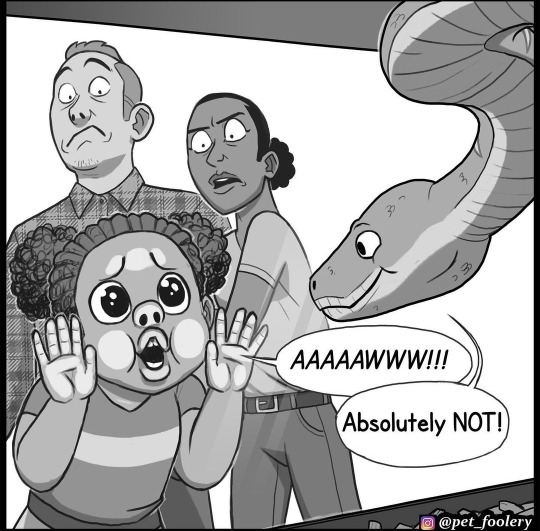

Comic by PetFoolery
Hands up if you'd also adopt that little noodle! ✋
285K notes
·
View notes
Text
This is an interesting stress behavior that we don't see very often in corn snakes!
The tail wiggle that you see here is called caudal luring and it's distinct from the vibrational shakey-tail threat display. This is a defense maneuver!
Shakey-tail is intended to trick a potential predator into thinking the snake is a venomous rattler.
By contrast, caudal luring is a last-ditch effort to get a predator to attack a snake's thrashing tail instead of their head, while the head is focused on leading the body the heck outta danger. They may lose part of their tail, but they have a better chance of living to tell about it. Some snakes and other reptiles may use caudal luring as a hunting strategy, too!
This snake is definitely stressed, not hunting, so I recorded a 5-second clip and then focused on helping them feel safe and in control of their body by loosening my hold on them and letting them move freely through my hands. They stopped the behavior and we moved on to the next part of the handling session.
A tiny bit of stress with a positive outcome can inoculate against future stress. The goal isn't to prevent any stress from ever occurring, but to limit stress to what is necessary for proper husbandry (in this case, taking a length measurement and transferring to a feeding cup) and to work with the animal to help them overcome stress when it occurs.
#snake#snakes#reptile#reptiles#reptiblr#corn snake#corn snakes#corn snake morphs#baby snake#classic corn snake#snake keeping#snake behavior#snake husbandry#stress#stress response#caudal luring
139 notes
·
View notes
Text

Sun King has left the building
Some time between late afternoon of 30th of September and the morning of the 1st of October Sunny has passed away as a result of multi-systemic antibiotic-resistant infection.
Sunny came to us aged 2.5-3 years in 2017, very sick, and after almost a year of treatments he eventually recovered; however some resistant bacteria remained in his body. As long as his immune system remained strong, he would be able to suppress the infection, but it was unlikely to ever fully clear.
It seems that the incident with the mass that Sunny had an emergency surgery for back in April marked the beginning of the end.
We took him to the veterinary hospital for a necropsy yesterday, and the results were that pretty much every system in his body was impacted, and he couldn't go on.
In the seven years he's had with us, Sunny brought innumerable moments of joy to us, and we're devastated by his loss.
I haven't yet fully processed it TBH. It's going to be some rough weeks ahead.
If you wish, please donate to your local reptile rescue in his name.
Goodbye sweet Sunny boy.

103 notes
·
View notes
Photo
Yeah if you keep your ball pythons like this you don't just look like an animal abuser.

This is the standard of keeping ball pythons. Its the most common technique, and it IS widly spread.
We can do better than this. This kind of stuff doesnt allow for a range of natural behaviors. It makes us look like animal abusers. Yes, the animals survive, but they cannot thrive in this setting. There’s literally not enough room for even one of them to stretch all the way out.
We can do better. We have to do better because this isn’t good for the animals health wise, or even mentally. It also gives HSUS and PETA more grounds to ban reptiles as pets.
Enrichment provides animals with an outlet for natural behaviors and promotes healthy animals. There are tons of studies on the benefits of enrichment- it’s not an extra step- it’s necessary for the good of the animal and is part of proper husbandry.
Dont be like this picture; dare to do more.
(image source purposely withheld)
7K notes
·
View notes
Text

From the Rattlecam project- "The first baby garter snake has arrived at the den! It immediately found the perfect pillow."
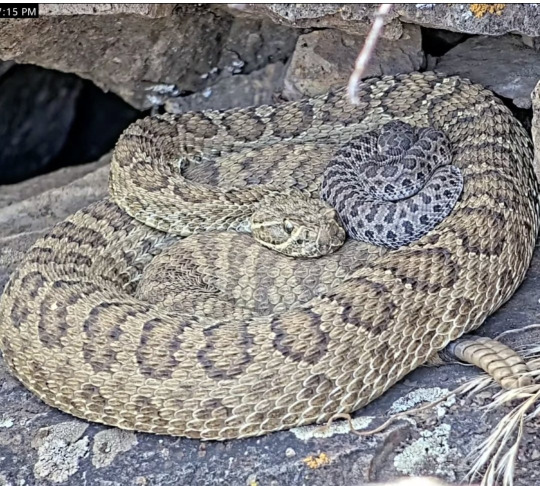
More rattlesnake snuggles, from the same location.
I know a lot of the time in captive care settings, we warn keepers that their snakes aren't cuddling- that they're competing for resources. And I'm of the opinion that for the vast majority of captive snakes, they don't benefit from prolonged, enforced conspecific contact.
But it's fascinating to watch these rattlesnake cams because rattlesnakes do benefit from prolonged conspecific contact. Rattlesnakes den together, and several of them are highly social species. If I was designing an exhibit for rattlesnakes, I'd certainly put more than one animal in there, because when you observe them in the wild they spend so much time together- which we didn't know until we started setting up cameras to observe them. It just goes to show that you really need to pay attention to the particular needs of individual species. What's good for rattlers and garters isn't necessarily good for ball pythons and cornsnakes.
790 notes
·
View notes
Text
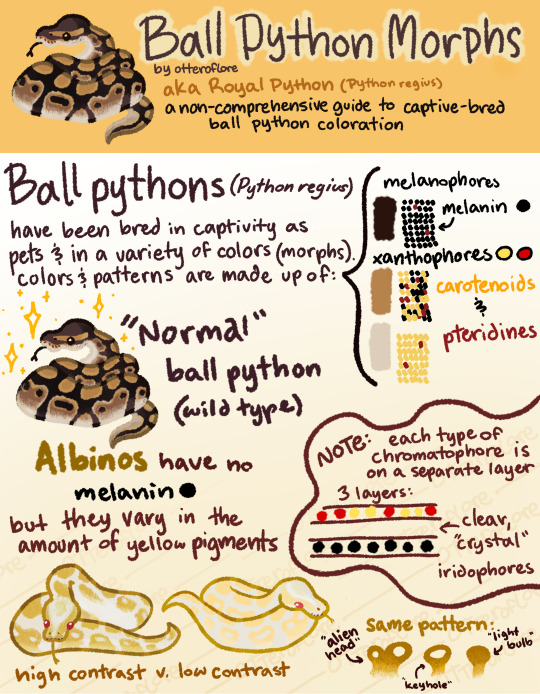
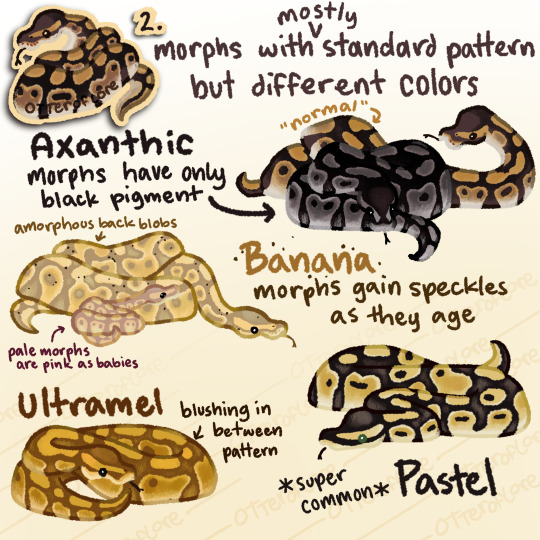
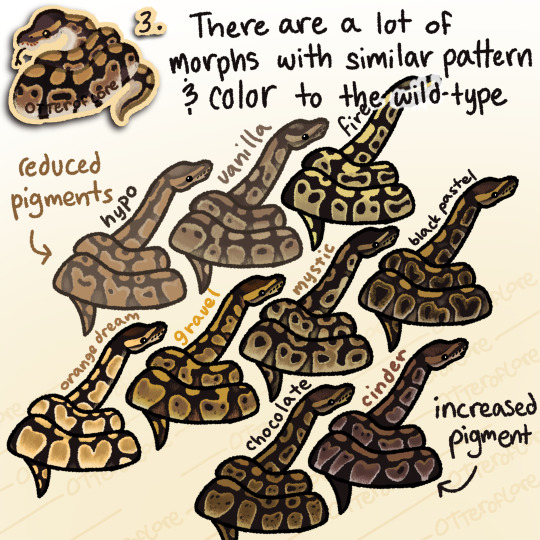
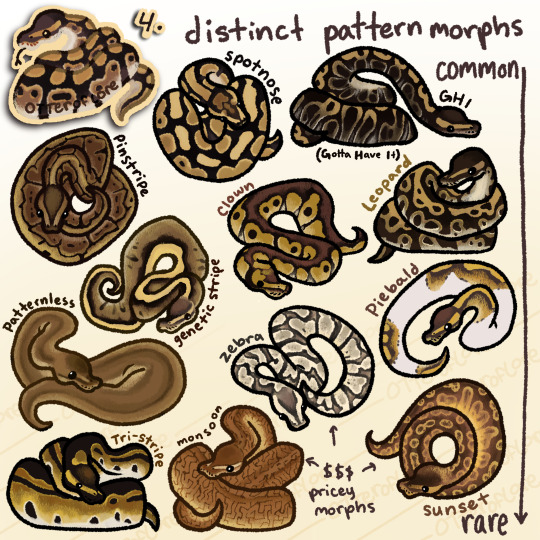
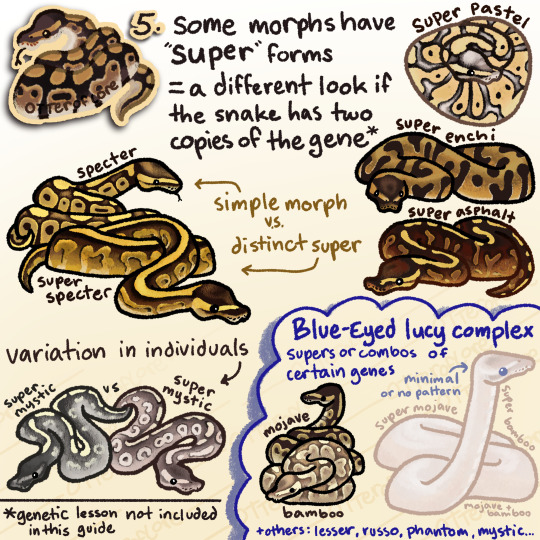
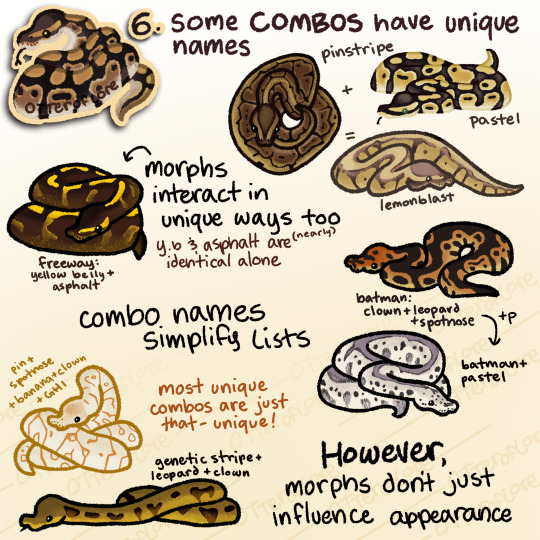
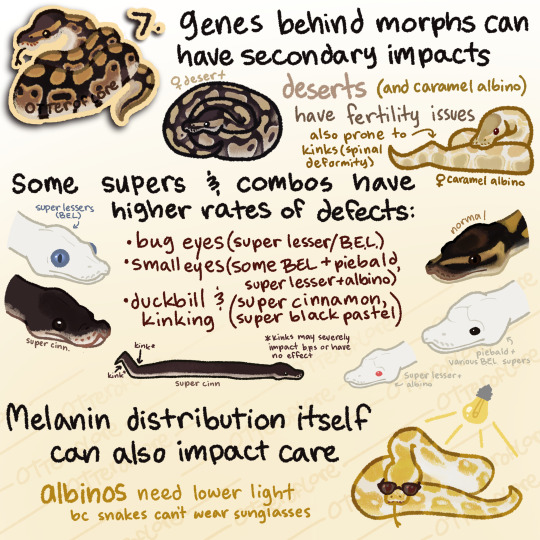
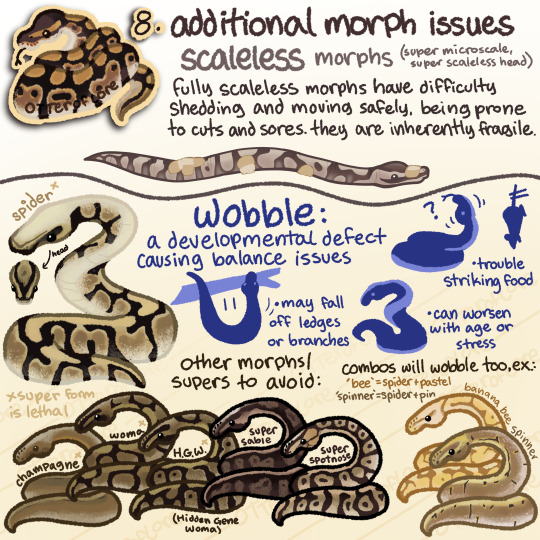
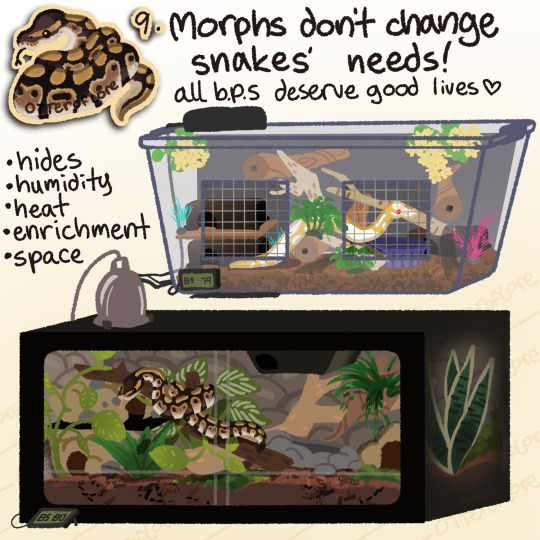
science sources (x, x, x, x, x, x, x, x) other (x)
This snake morph guide is just meant to explain some basics of morphs. I would caution anyone in buying a pet that takes a high level of care just because it's pretty, and frankly any breeder that continues to breed morphs with physiological and neurological defects should be put out of business. I did my best as I find this interesting and believe there's a lot of misinformation out there due to people trying to literally sell things to their audience.
I included some links if you would like additional reading. They range from a study on captive care management, studies I could find relevant to the severe issue morphs, and some general on snake color and scales.
6K notes
·
View notes
Text
No wonder he’s depressed. Where’s the UV light. The temperature gradient. A pool of water even. To cool off in, perhaps. Where is the regular eating schedule. Fucking basking spot??? Naps???? Is there even a Little Bit of humidity for shedding. This place looks drier than a skeleton’s pussy are you kidding me
183 notes
·
View notes
Text

[ID: a pile of plant cuttings in front of a naturalistic reptile enclosure. End ID]
Oort’s enclosure had overgrown to the point where the pothos leaves were trying to stop me from opening the doors, so I finally accepted it was time for a major trim.
0 notes